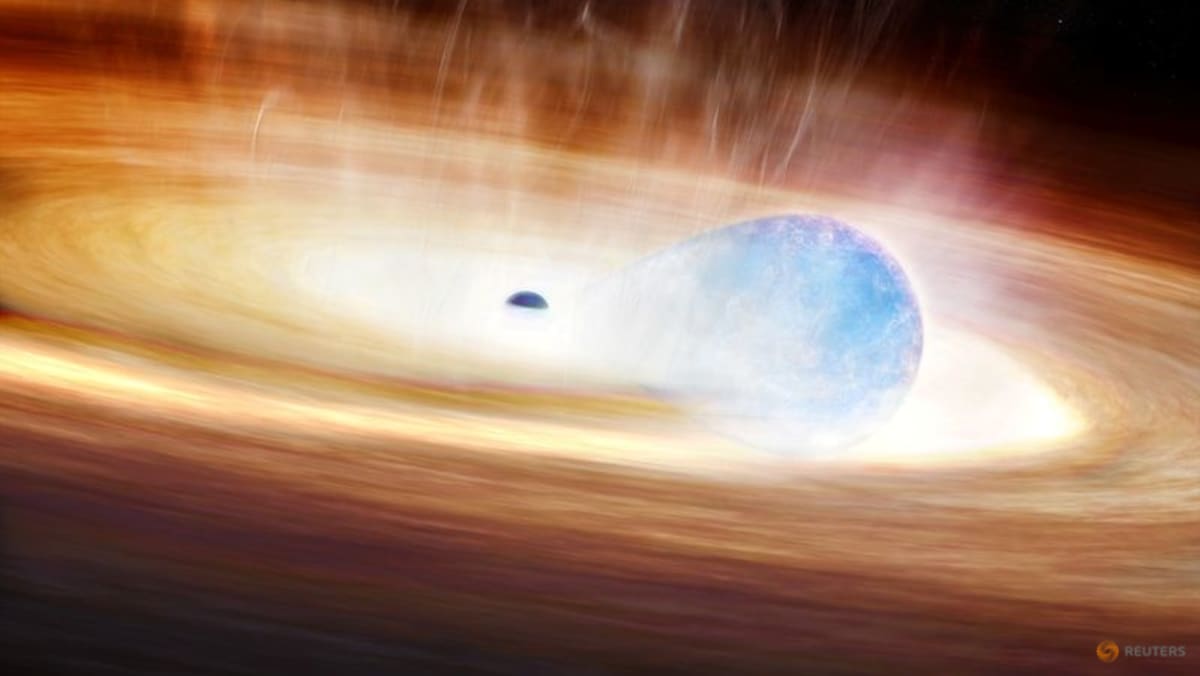WASHINGTON: Astronomers have observed the calamitous result of a star that picked the wrong dance partner. They have documented what appears to be a new type of supernova, as stellar explosions are known, that occurred when a massive star tried to swallow a black hole with which it had engaged in a lengthy pas de deux.
The star, which was at least 10 times as massive as our sun, and the black hole, which had a similar mass, were gravitationally bound to one another in what is called a binary system. But as the distance separating them gradually narrowed, the black hole’s immense gravitational pull appears to have distorted the star, stretching it out from its spherical shape, and siphoned off material before causing it to explode.
“We caught a massive star locked in a fatal tango with a black hole,” said astrophysicist Alexander Gagliano of the US National Science Foundation’s Institute for AI and Fundamental Interactions located at the Massachusetts Institute of Technology, a co-author of the study published this week in the Astrophysical Journal.
“After shedding mass for years in a death spiral with the black hole, the massive star met its finale by exploding. It released more energy in a second than the sun has across its entire lifetime,” Gagliano added.
The explosion occurred about 700 million light-years from Earth. A light-year is the distance light travels in a year, 9.5 trillion km.
“The gravitational pulls of the two objects were actually similar because we think they had similar masses. But the star was much larger, so it was in the process of engulfing the black hole as the black hole pulled material off of it. The star was large but puffy, and the black hole was small but mighty. The black hole won out in the end,” Gagliano said.
The researchers are not certain of the exact mechanism that caused the supernova.
“It’s unclear if the distortion triggers an instability that drives the collapse of the star, and then the leftover stellar material gets rapidly eaten by the black hole, or if the black hole completely pulls the star apart before it goes supernova,” said Harvard University astrophysicist and study lead author Ashley Villar.
